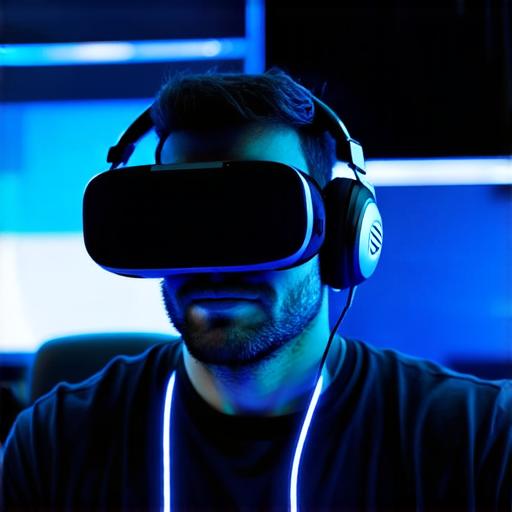In recent years, virtual reality (VR) technology has made significant strides, with more advanced and immersive devices becoming available to consumers. With this newfound popularity, there has been an increased demand for high-quality VR experiences. To meet this demand, developers are turning to powerful tools such as Unreal Engine, which offers a wide range of features for creating engaging VR content. In this article, we will explore the benefits and capabilities of using Unreal Engine as a tool for VR development, including case studies and real-life examples to illustrate its effectiveness.
Unreal Engine: A Powerful VR Development Tool
Unreal Engine is a widely used game engine that also offers powerful tools for VR development. It was first released in 1998 and has since been updated with numerous features and improvements, making it a popular choice among developers. Some of the key benefits of using Unreal Engine for VR development include:
High-Quality Graphics
Unreal Engine is known for its high-quality graphics capabilities, which are especially important in VR where immersion is crucial. It uses advanced rendering techniques such as ray tracing and physically-based rendering to produce realistic visuals that can be customized to suit specific needs.
Built-In Support for VR Development
Unreal Engine comes with built-in support for VR development, including features such as motion tracking, room-scale environments, and support for various VR controllers. This makes it easier for developers to create VR experiences without having to worry about additional setup or configuration.
Advanced Physics Simulation
Unreal Engine includes advanced physics simulation capabilities that can be used to create realistic and interactive VR environments. This is particularly important in applications such as training simulations, where accurate physical modeling is essential.
Cross-Platform Compatibility
Unreal Engine supports multiple platforms, including PC, console, and mobile devices. This makes it easier for developers to reach a wider audience and create experiences that can be accessed from a variety of devices.
Case Studies: Real-Life Examples of Unreal Engine in VR Development
Training Simulations
Unreal Engine has been used to create realistic training simulations for a variety of industries, including aviation, military, and healthcare. These simulations provide immersive and interactive experiences that allow trainees to practice skills in a safe and controlled environment. For example, the US Army used Unreal Engine to create a virtual reality training program for soldiers that simulated real-world combat scenarios.
Educational Applications
Unreal Engine has also been used in educational applications, including virtual field trips and interactive history lessons. These experiences provide students with an immersive and engaging way to learn about different subjects. For example, the University of Maryland used Unreal Engine to create a virtual reality experience that allowed students to explore ancient Egypt and learn about its history and culture.
Gaming Industry
The gaming industry has been one of the earliest adopters of Unreal Engine for VR development. Many popular VR games have been developed using Unreal Engine, including “Beat Saber,” “Job Simulator,” and “Tilt Brush.” These games showcase the high-quality graphics and advanced physics simulation capabilities of Unreal Engine.
Comparing Unreal Engine with Other VR Development Tools
There are several other tools available for VR development, including Unity, CryEngine, and Source 2. While each tool has its own strengths and weaknesses, Unreal Engine stands out for its high-quality graphics capabilities, built-in support for VR development, and advanced physics simulation capabilities. Additionally, Unreal Engine’s cross-platform compatibility makes it easier for developers to reach a wider audience.

FAQs: Frequently Asked Questions About Unreal Engine in VR Development
What are the system requirements for using Unreal Engine for VR development?
A: The system requirements depend on the specific version of Unreal Engine being used and the type of VR device being targeted. However, most VR devices require a powerful computer with at least 8GB of RAM and a dedicated graphics card.
How easy is it to use Unreal Engine for VR development?
A: Unreal Engine comes with built-in support for VR development and includes a variety of tutorials and resources to help developers get started. However, creating high-quality VR experiences can be complex and requires a certain level of expertise in game development and 3D modeling.
What is the cost of using Unreal Engine for VR development?
A: Unreal Engine offers a free version, as well as paid versions with additional features and support. The cost of a paid license depends on the size and scope of the project.
Conclusion
Unreal Engine is a powerful tool for VR development that offers high-quality graphics, built-in support for VR development, advanced physics simulation capabilities, and cross-platform compatibility. It has been used in a variety of industries and applications, including training simulations, educational applications, and gaming. While there are other tools available for VR development, Unreal Engine stands out for its high-quality graphics and advanced physics simulation capabilities. If you’re looking to create engaging VR experiences, Unreal Engine is definitely worth considering.



